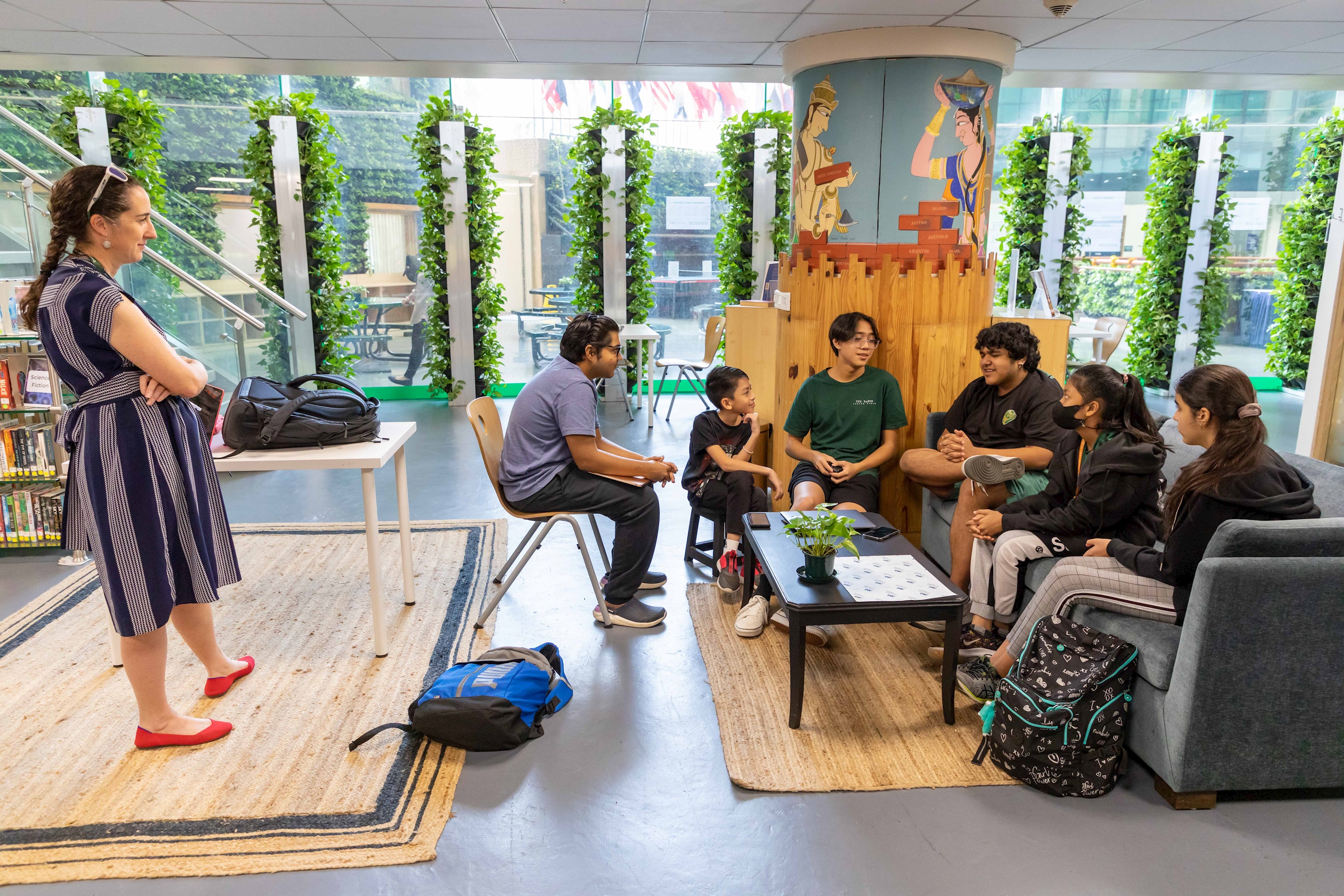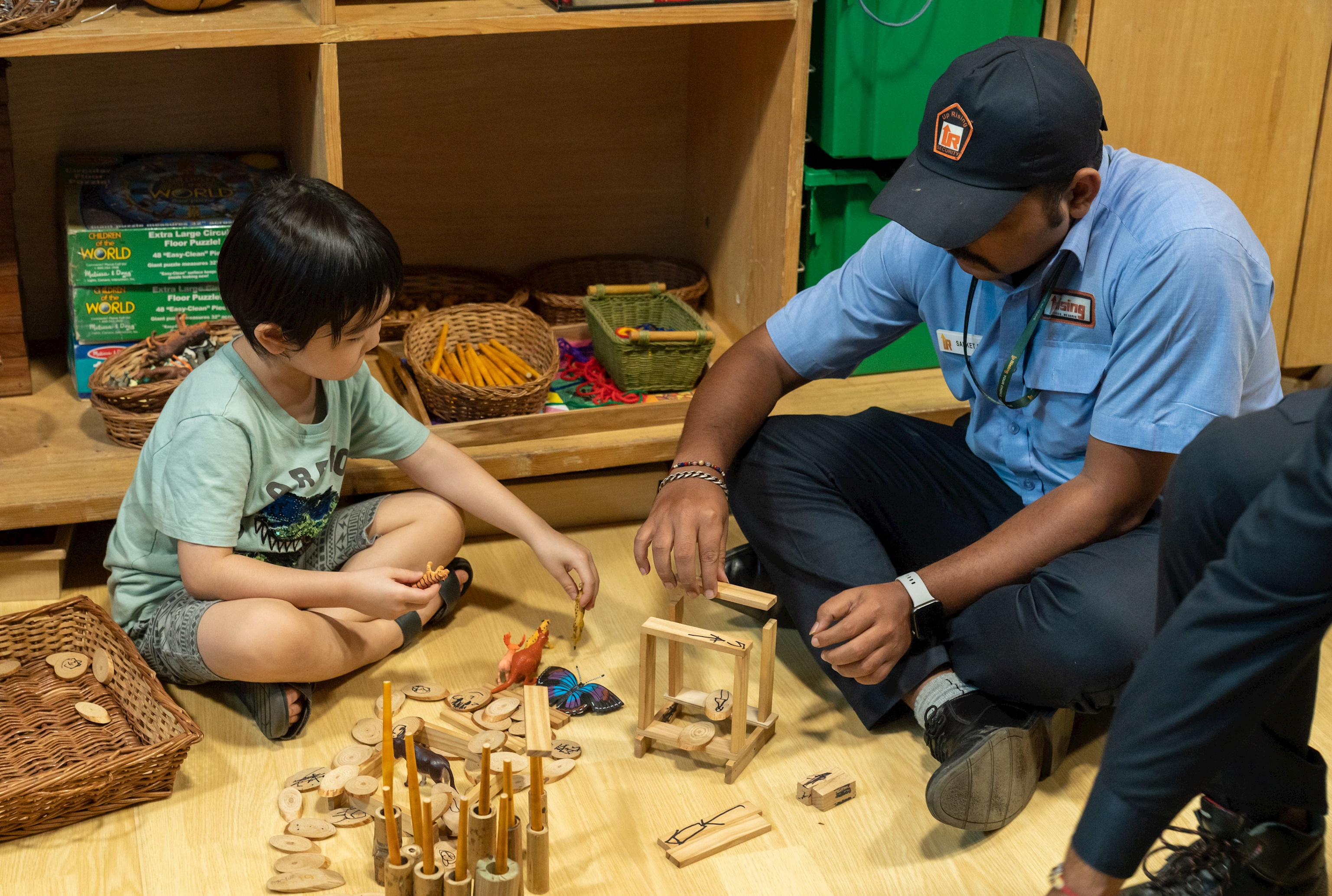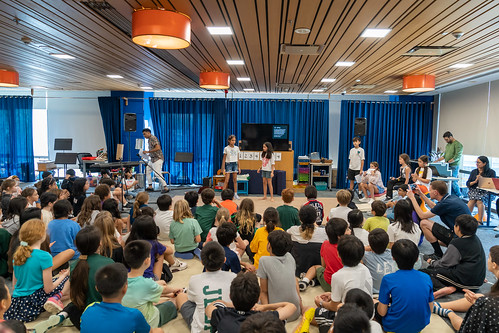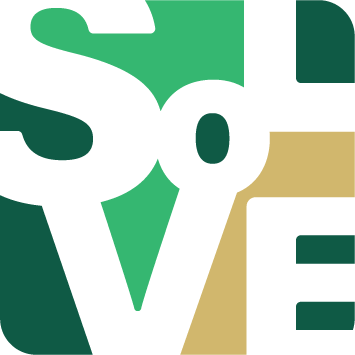

Located in the heart of Mumbai, India, the American School of Bombay is a coeducational, independent, IB day school from Pre-K to Grade 12.

—Dr. Paul Richards, Head of School

While schools around the world continue to shed masks and ease restrictions from pandemic protocols, the American School of Bombay is making strides to recapture some of the magic of the past and use it to create a new path forward for all students.
For a school community as closely-knit as ASB, the choice for this year’s guiding theme of Connection & Community was an easy one. The theme sets the tone for communications and events and for identifying new opportunities throughout the school year.
The launch of a new learning initiative, SOLVE at ASB, was one such opportunity. By engaging all students, PreK to Grade 12 as well as staff and the wider community of parents and NGO partners, SOLVE provides an inclusive opportunity to strengthen connections among peers across grade levels and disciplines.
“After two years of disempowerment—this marks a return to empowerment for students.”—Kristopher ‘Linus’ Velez, ASB Design Technology Teacher
The program’s objectives are not just about community-building. Inspired by an MIT initiative of the same name, SOLVE at ASB is a semi-annual, week-long design thinking experience that gives students agency to tackle relevant, real world issues, and see their prototypes through to implementation.
Design thinking is a non-linear, iterative process of problem solving with goals of understanding users, challenging assumptions, redefining problems, and creating innovative solutions. It is formally broken down into five phases—Empathize, Define, Ideate, Prototype, and Test—and is most useful when addressing problems that are loosely-defined or unknown. Design thinking’s value in the business world (Google and Apple are two of its proponents) is reflected in its popularity as a subject at top universities such as MIT and Stanford.
Design thinking—at the core of the SOLVE at ASB experience—is not new to ASB.
The school celebrates a tradition of innovation and leadership in teaching and learning that has earned the respect of peer institutions for over a decade, and instructional staff often apply the process of design thinking to core curricula—particularly in science and art classrooms, innovation labs, and maker spaces. The design thinking process is also widely used in professional development with ASB’s world class educators, for whom the spirit of collaboration is second nature.
With an intentional, school-wide, week-long design thinking experience added twice a year to the school calendar, ASB is able to foster a culture of innovation and teach design principles while generating good, practicable ideas toward advancing the school’s mission. SOLVE at ASB will give students a more comprehensive understanding of the process of design thinking through consistency and through student-driven, active engagement.
“We want SOLVE at ASB to be as inclusive an experience as possible—where people learn the impact of design thinking, contribute to improving the school, and feel the power of the community sharing an experience.” —John Kilbane, ASB Design Technology Teacher
The inaugural SOLVE at ASB event was held in November, and began with a challenge statement—a prompt to foster creative discussion and identify the broad topics the students would go on to explore: “How do we build the ASB Community back, stronger than ever?”
On the Secondary Campus, Middle and High School students selected the topic that best matched their interests, and were then grouped in diverse, multi-grade, six-to-seven person teams—with one faculty collaborator assigned to each. Within those teams, students self-identified in roles of Project Coordinator (to ensure all voices are heard and all tasks are completed), Design Historian (to document all data and discussions) and Chief Storyteller (to ensure the final prototype best conveys the team’s proposed solution). Teams started each day reviewing the required tasks, and ended each day with an exit ticket.
Technology was leveraged throughout the experience. Daily tasks were published through Schoology and prototypes were showcased using Padlet. For prototyping, student teams could choose to use anything from online creative tools such as Canva and Wix, platforms for 3D modeling, or a number of digital art applications—to hands-on tools like laser-cutters or paper-and-glue in the Maker Space.
Days were organized loosely around the stages of the design thinking process. On Day 2, students were asked to Empathize & Define, getting to know the members of their teams, identifying roles, understanding personas*, and creating the group’s challenge statement; on Day 3, students were asked to Ideate, documenting ideas with a focus on variety and volume using various protocols and resources such as brainstorming and mind mapping for generating those ideas; on Day 4, teams began to Prototype, working towards a creative presentation for the final showcase on Day 5, where students could learn from their peers and offer feedback.
*Before the event, students had contributed to the creation of personas—fictional characters that represent real characteristics, beliefs, and data—from a fifteen-question student survey. With 290 responses from just over 300 students, engagement was high from the get go. Many familiar post-isolation themes emerged, such as the desire for “strong pre-pandemic community bonds”.
—Grade 8 Student

At the end of the week-long experience, students had collaborated to prototype some remarkable projects. There were detailed plans for activities to foster community connection and cultural exploration such as sporting competitions, international fairs, cook-offs, and carnivals; support for mental health through a wellness club and dedicated wellness center; reimagined spaces for recreation, arts, crafts, and media for students to unwind between classes; and meaningful career workshops and cross-divisional partnerships to better prepare students for High School and beyond.
It’s design thinking’s Test stage—the actual implementation of prototypes—that makes SOLVE at ASB a unique opportunity for the students involved. The goal is for the students to see their prototypes through to the stage where they are actually created.
“We emphasize the importance of creating prototypes that are feasible and well-articulated, and with a clear connection to the data collected.”—Tia Lazarus, ASB Digital Storyteller
Of the forty six prototypes presented in the Fall Showcase, the SOLVE at ASB committee identified thirteen projects as realistic for implementation and, although the student creators of each project continued to lead the process, opened them up to any community member with the interest to contribute.
Four of the thirteen projects are already complete: an after-school movie room, two dedicated wellness spaces, and greenery in learning spaces. Project implementation of the others will continue as an extracurricular activity until they are seen through. It’s a challenge for a busy student heavily involved in campus life—but surely a rewarding one.
“We feel really proud [to see that my prototype was implemented] because we put a lot of work into making it happen.”— Students from the Growing Wellness Prototype
To make SOLVE at ASB truly a school wide experience, all students were given the same challenge statement, at the same time.. For practical reasons though, on the Elementary School Campus, protocols and resources were adapted to suit learning levels, and students collaborated within their own classroom groups.
Grade 1 students used their newly mastered ideation strategies to discover that a more peaceful playground would make their community stronger, and collaborated on a workable plan to increase the number of fun, safe, and internationally diverse playground games available to them. The project is ongoing as students continue to invite ideas and feedback from the greater community and implement the results.
Grade 4/5 embraced the challenge to keep the initiative student-led, tackling all aspects of the planning and production of a talent show as their culminating event. Acts were inclusive and highlighted all kinds of passions, from singing to geopolitical discussions to frog-jumping.
For the youngest learners, SOLVE was a first introduction to design thinking. PreK students took the challenge quite seriously with a literal response to each part of the prompt. How do we build the ASB community back, stronger than ever? Why, by inviting the school’s security and transportation teams to help create miniature models of campus using classroom blocks of course!
—Marci Carrel and Danielle Shakur, ES Principal and ES Associate Principal

Project implementation does not necessarily mean project completion.
In design thinking, evaluators rigorously test prototypes, and teams often use the results of testing to redefine the problems and return to previous stages to make further refinements; That is what makes it a non-linear, iterative process. ASB hopes to create an ongoing feedback loop where students can review past prototypes and offer input and improvements over time.
“Our goal is for the students to see solutions to real world challenges—and part of that reality is openness to change.”—Kristopher ‘Linus’ Velez, ASB Design Technology Teacher
SOLVE at ASB is just getting started. While the inaugural event was celebrated as a success, a few things were learned from the experience. The student roles, for example, were added after the fact when organizers recognized that teams needed a little more structure. The new roles encouraged student leadership over leaning on the teacher facilitators, and helped to ensure student voice and choice.
In the spirit of design thinking, the organizers of the first experience refer to it as “SOLVE 1.0.” This year, they plan to host the second iteration, with a new challenge statement, new challenges, and new prototypes. Most certainly, it will involve some tweaking to the initiative itself based on feedback and past experience.
In design thinking, everything is always in beta.

